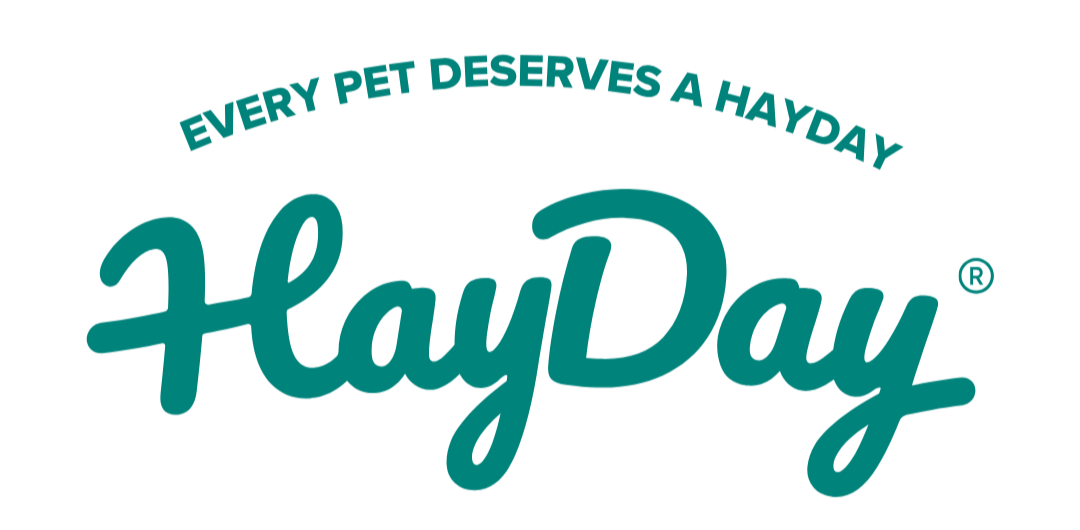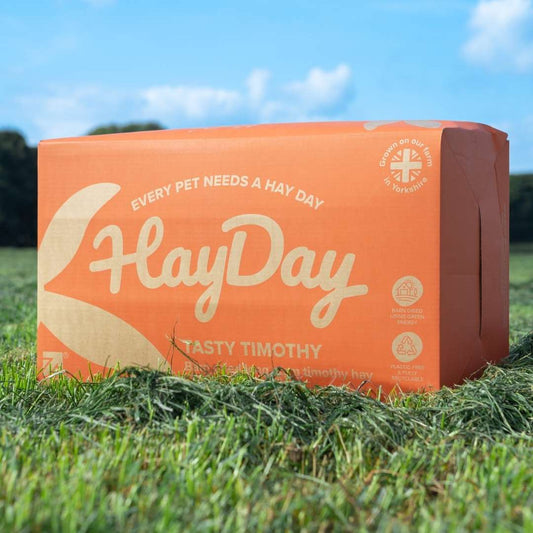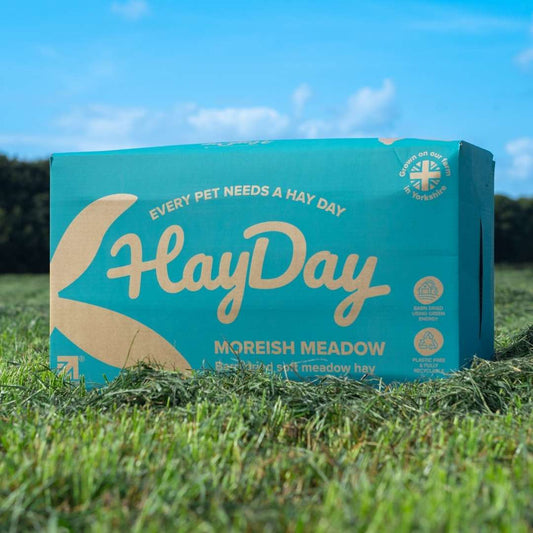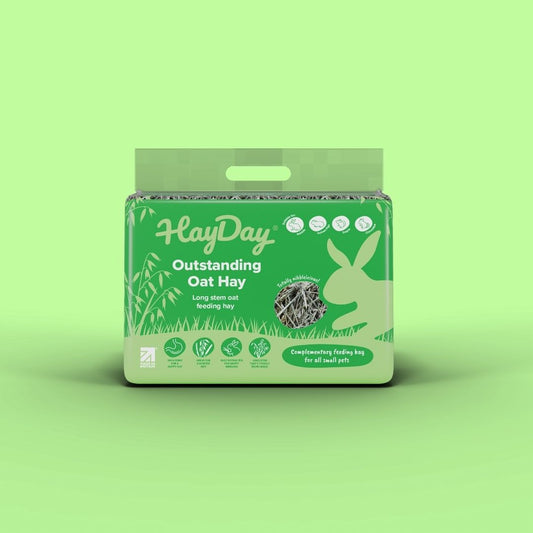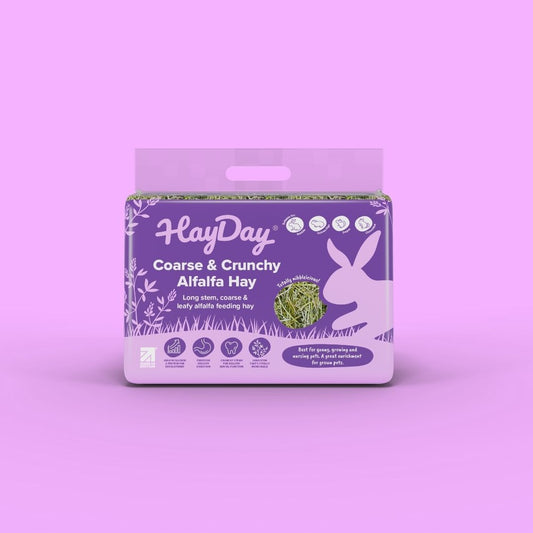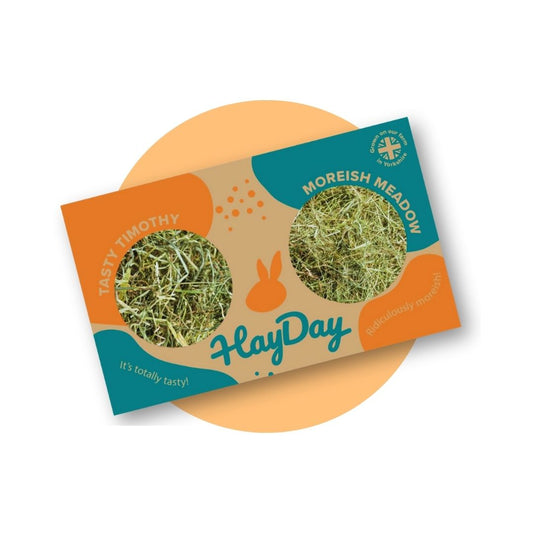Tasty Timothy Hay
Tasty Timothy Hay
Couldn't load pickup availability
Barn dried, long stem timothy feeding hay for small pets
Our beautifully green timothy hay is an ideal everyday feeding hay for all small animals including rabbits, guinea pigs, chinchillas and degus.
It is sweet to taste with naturally coarse stems to assist with the maintenance of healthy digestion and dental function. High in fibre, protein and dust extracted, our timothy hay is a high quality forage choice for small pets.
Why Choose Timothy Hay?
Why Choose Timothy Hay?
- Naturally coarse, long stems to assist with digestion and dental function
- Excellent source of 100% natural fibre
- High in protein to reduce hard feed requirement
- Barn dried and dust extracted for freshness
- Sweet to taste making it totally delicious
Small pets are hopping mad for our premium quality, highly nutritious and beautifully green timothy hay, which keeps them happy and healthy.
About HayDay
About HayDay
HayDay started on our family farm in Yorkshire by ourselves: self confessed grass enthusiast brothers, Tom and Mike.
With over 10 years experience, we understand the perfect grass mixes for the health and wellness of your small pets.
We can barn dry the hay right here on our farm in Yorkshire using green energy (so we don’t have to rely on the British weather!) so you can rest assured your hay will be premium quality every time.
Feeding Guidelines
Feeding Guidelines
Our Tasty Timothy Hay is a great forage choice for rabbits, guinea pigs, degus and chinchillas who thrive on a plant based, grass led diet. See our page for species-specific feeding guidelines.
Size Options & Dimensions
Size Options & Dimensions
Product Size: 1kg
Dimensions: 24 x 29 x 15 cm
Product Size: 2.7kg
Dimensions: 49 x 29 x 15 cm
Product Size: 4.5kg
If your small pet's love long stem hay, this one's for you! Our 4.5kg boxes offer the most premium and longest stem out of our product range.
Dimensions: 60 x 45 x 30 cm
Nutrition
Nutrition
Nutrition: Crude Protein 8%, Crude Fibre 32%, Crude Fats and Oils 2.4%; Crude Ash 6%, Sodium 0.01%
Composition: 100% timothy hay
Shipping & Returns
Shipping & Returns
We use express delivery, normally arriving next day, with full tracking information available.
We recommend ordering before 10am Monday to Friday for same day dispatch.
*For Scotland and the Highlands, please allow for two to five working day delivery.
Free express delivery for all orders over £40 and for those under a flat charge of £4.45 is applied.
Storage & Recyclable
Storage & Recyclable
Hay should be stored in a cool dry place. See our customers storage solutions for more ideas
Our timothy boxes also feature cut-out sections for endless hours of fun, encouraging movement in small pets, whilst foraging and recycling the packaging.
Share












Your Pets Will Also Love!
-
View product
Tasty Timothy Hay
Regular price From £6.99 GBPRegular priceUnit price / per -
View product
Moreish Meadow Hay
Regular price From £6.99 GBPRegular priceUnit price / per -
View product
Sweet & Munchy Ryegrass Hay
Regular price From £6.99 GBPRegular priceUnit price / per -
View product
Outstanding Oat Hay 1kg
Regular price £6.99 GBPRegular priceUnit price / per -
View product
Coarse & Crunchy Alfalfa Hay 1kg
Regular price £6.99 GBPRegular priceUnit price / per -
View product
Hay Taster Pack
Regular price £4.99 GBPRegular priceUnit price / per
